Itching that won’t go away-no rash, no bug bites, just relentless, deep skin irritation-is one of the most frustrating symptoms in liver disease. For people with cholestasis, where bile doesn’t flow properly from the liver, this itch isn’t caused by allergies or dry skin. It’s driven by bile acids and other chemicals building up in the blood. And traditional antihistamines? They barely help. That’s because this isn’t histamine-driven itching. It’s something else entirely.
Why Cholestatic Itching Is So Different
Most people assume itching means an allergic reaction. That’s why so many patients are handed antihistamines when they first complain of unexplained itching. But in cholestasis, that approach fails. Studies show up to 68% of primary care doctors still prescribe them first, even though guidelines from the American Association for the Study of Liver Diseases (AASLD) have clearly stated since 2018 that they have no proven benefit. The real culprits are bile acids, lysophosphatidic acid (LPA), and endogenous opioids. When bile flow is blocked-whether by primary biliary cholangitis (PBC), primary sclerosing cholangitis (PSC), or even pregnancy-related cholestasis-these substances accumulate. LPA, produced by the enzyme autotaxin, is now considered one of the strongest itch triggers. It activates nerve endings in the skin directly. This is why scratching doesn’t bring relief. The problem isn’t on the surface. It’s inside the body.First-Line Treatment: Bile Acid Resins
Cholestyramine (brand name Questran) has been the go-to first-line treatment for decades. It’s not a drug that gets absorbed into the bloodstream. Instead, it’s a powder that binds to bile acids in the gut, trapping them so they’re flushed out in stool instead of being reabsorbed. That breaks the cycle. The standard dose starts at 4 grams once a day. It’s slowly increased to 16-24 grams daily, split into two or three doses. Many patients see improvement within a week. In responsive cases, itching drops by 50-70%. But here’s the catch: most people can’t stick with it. Cholestyramine tastes like chalk mixed with sand. A 2020 survey in Liver International found 78% of patients disliked the taste. In a 2021 patient survey of 342 people, 65% stopped using it within three months because of the texture, bloating, or constipation. Even when it works, the side effects make it hard to take long-term. To make it more tolerable, patients often mix it with applesauce, yogurt, or strong-flavored juices. But even then, compliance remains low. That’s why doctors need better options.Second-Line: Rifampin and the Hidden Risks
When cholestyramine doesn’t cut it, the next step is usually rifampin (Rifadin). Originally an antibiotic for tuberculosis, it turns out to be surprisingly effective for itching. It works by boosting liver enzymes that help clear bile acids and other itch-causing chemicals from the blood. Dosing starts at 150 mg daily, often increased to 300 mg after two weeks. Studies show 70-80% of PBC patients get meaningful relief within four weeks. One patient on Reddit wrote: “Rifampin turned my urine orange but reduced my itching from 8/10 to 3/10 in two weeks-worth it.” But it’s not without danger. Rifampin can cause liver enzyme spikes in 15-20% of users. It also interacts with dozens of medications-birth control pills, blood thinners, antidepressants-by speeding up how fast the liver breaks them down. That’s why it’s only used under close monitoring by a hepatologist. It’s also less effective in PSC than in PBC. One 2020 study found only 45% of PSC patients responded, compared to 75% of PBC patients. So it’s not a universal fix.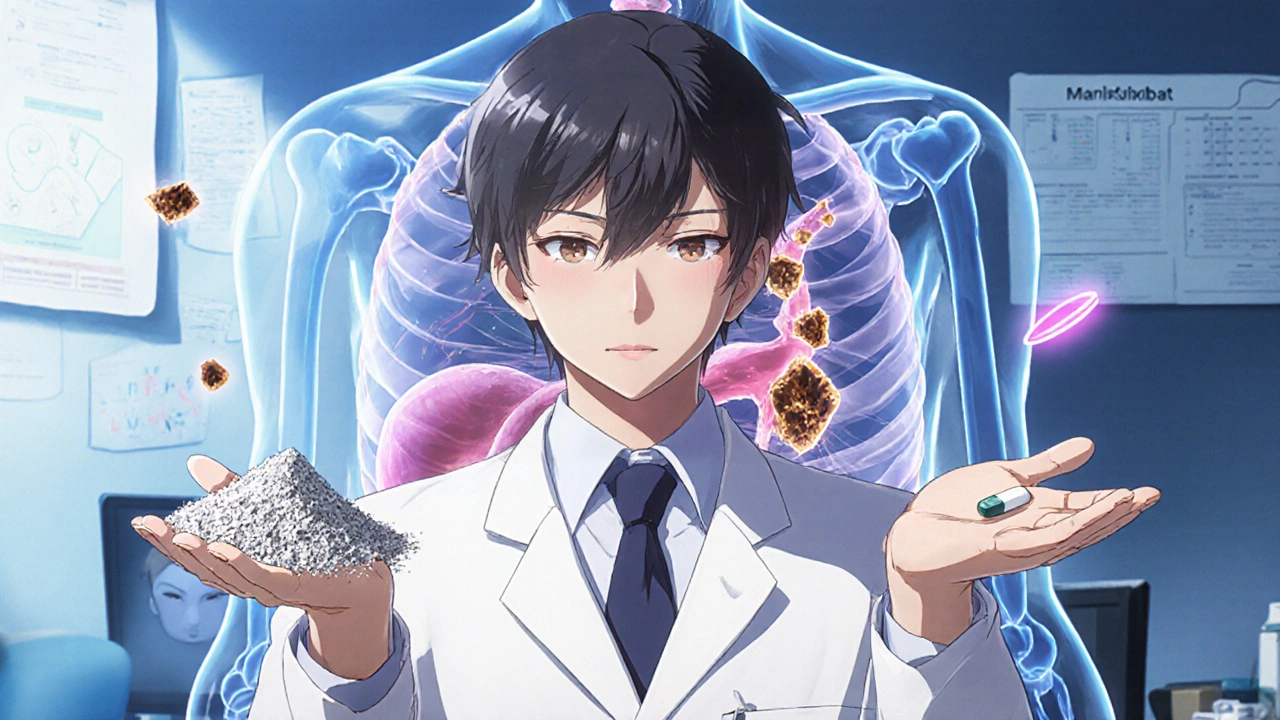
Third-Line: Naltrexone and Sertraline
If rifampin doesn’t work or can’t be tolerated, the next options are naltrexone and sertraline. Naltrexone blocks opioid receptors in the brain and spinal cord. In cholestasis, the body produces its own natural opioids that worsen itching. Blocking them reduces the signal. Dosing starts low-6.25 mg daily-and is slowly increased to 50 mg over several weeks. About 50-65% of patients report improvement. But the first few days are rough. Around 30% experience nausea, anxiety, and sleeplessness that feel like opioid withdrawal-even if they’ve never used opioids. That’s why slow titration is critical. Sertraline (Zoloft), an SSRI antidepressant, is used off-label. It’s not clear exactly how it helps, but it seems to modulate nerve signals involved in itch perception. It’s most effective in PBC patients, with studies showing 40-50% response rates. It’s a good option for people who also have depression or anxiety. But in non-PBC cholestasis, it rarely helps.The New Hope: Maralixibat and IBAT Inhibitors
The biggest shift in treatment came in 2021, when the FDA approved maralixibat (Mytesi) for children with Alagille syndrome. It’s not a bile acid resin. It’s an IBAT inhibitor-blocks the ileal bile acid transporter, preventing bile acids from being reabsorbed in the gut. This keeps them out of the bloodstream entirely. In the phase 3 MARCH trial (2022), maralixibat reduced itching by 47% on a visual scale, compared to 42% for cholestyramine. But here’s the game-changer: only 12% of patients stopped taking it due to side effects, compared to 35% for cholestyramine. Patients praised its once-daily pill form and lack of gritty texture. A 2023 Cleveland Clinic survey showed 82% continued use at six months. It’s not cheap-$12,500 a month-but for those who’ve tried everything else, it’s life-changing. And it’s now being studied in adults with PBC and PSC. Early results are promising.What’s Coming Next
The future of treatment is targeting the root cause: the autotaxin-LPA pathway. Drugs like IONIS-AT332-LRx, an antisense oligonucleotide, are in phase 2 trials. In early results, it cut serum autotaxin by 65% and reduced itching by 58%. That’s a direct hit on the mechanism. Another promising candidate is volixibat, another IBAT inhibitor. In the VISION study (2023), it reduced itching by 52% at six months with only 18% discontinuation. And surprisingly, GLP-1 receptor agonists-drugs like semaglutide used for diabetes and weight loss-have shown a 30% itch reduction in diabetic PBC patients. That’s an unexpected bonus.
When All Else Fails: Transplant
For the 10-15% of patients whose itching is unbearable and unresponsive to all drugs, liver transplant remains the only definitive cure. Studies show 95% of patients experience complete resolution of itching after transplant. But it’s major surgery with lifelong risks. It’s reserved for advanced disease or when quality of life is destroyed.What Patients Need to Know
If you have cholestasis and are still itching:- Stop assuming antihistamines will help-they won’t.
- Cholestyramine can work, but if you can’t tolerate it, don’t give up. There are other options.
- Rifampin needs monitoring. Don’t start it without liver tests and a doctor’s supervision.
- Naltrexone’s first week is hard. Stick with it if you can, or ask for a slower ramp-up.
- Maralixibat isn’t for everyone yet, but if you’re eligible, ask your hepatologist.
- Keep a symptom diary. Note what helps, what doesn’t, and how your sleep and mood are affected. That info guides treatment.
Practical Tips for Daily Relief
While waiting for meds to kick in, or alongside them:- Use fragrance-free emollients like CeraVe or Eucerin after showers.
- Take cool (not cold) showers. Hot water strips natural oils and worsens itch.
- Wear loose, cotton clothing. Wool and synthetics rub and irritate.
- Keep nails short. Scratching causes skin damage and infection risk.
- Use a humidifier. Dry air makes skin more sensitive.
Itching in cholestasis is not a minor annoyance. It disrupts sleep, causes depression, and isolates people from daily life. But the tide is turning. We’re moving from guessing at symptoms to targeting the exact biological pathways that cause them. The days of just enduring the itch are ending.
Why don’t antihistamines work for cholestatic itching?
Antihistamines block histamine, a chemical involved in allergic reactions. But cholestatic itching is caused by bile acids, lysophosphatidic acid (LPA), and endogenous opioids-not histamine. Multiple studies, including those from AASLD, show no significant benefit from antihistamines in this condition. Despite this, up to 68% of primary care doctors still prescribe them, often out of habit or lack of familiarity with liver disease guidelines.
Can cholestyramine be taken with other medications?
No, not at the same time. Cholestyramine binds to many drugs in the gut, preventing their absorption. This includes thyroid meds, blood thinners, antibiotics, and birth control pills. To avoid interactions, take cholestyramine at least 1 hour before or 4-6 hours after any other medication. Always check with your pharmacist or hepatologist before starting or changing any drug.
Is rifampin safe for long-term use in cholestasis?
Rifampin can be used long-term under medical supervision, but it carries risks. It can raise liver enzymes in 15-20% of users, so monthly blood tests are needed. It also speeds up the metabolism of many other drugs, which can reduce their effectiveness. It’s most effective in PBC patients and less so in PSC. If you’re on rifampin, avoid alcohol and monitor for signs of liver stress like yellowing skin, dark urine, or unusual fatigue.
How does maralixibat compare to cholestyramine?
Maralixibat is more effective at reducing itching than cholestyramine in some studies, with 47% vs. 42% reduction on itch scales. But the real advantage is tolerability. Only 12% of patients stop maralixibat due to side effects, compared to 35% for cholestyramine. It’s a pill taken once daily with no gritty texture or taste issues. However, it costs over $12,000 a month, while cholestyramine is under $70. Insurance coverage varies, and it’s currently FDA-approved only for Alagille syndrome, though off-label use in PBC is growing.
Are there any new drugs on the horizon?
Yes. Volixibat, another IBAT inhibitor, showed 52% itch reduction in phase 3 trials with low side effects. IONIS-AT332-LRx, an antisense drug targeting autotaxin, reduced itching by 58% in early trials. GLP-1 agonists like semaglutide are also showing unexpected benefits in diabetic PBC patients. These aren’t just symptom blockers-they’re targeting the actual biological causes of itching, which could transform care in the next 3-5 years.
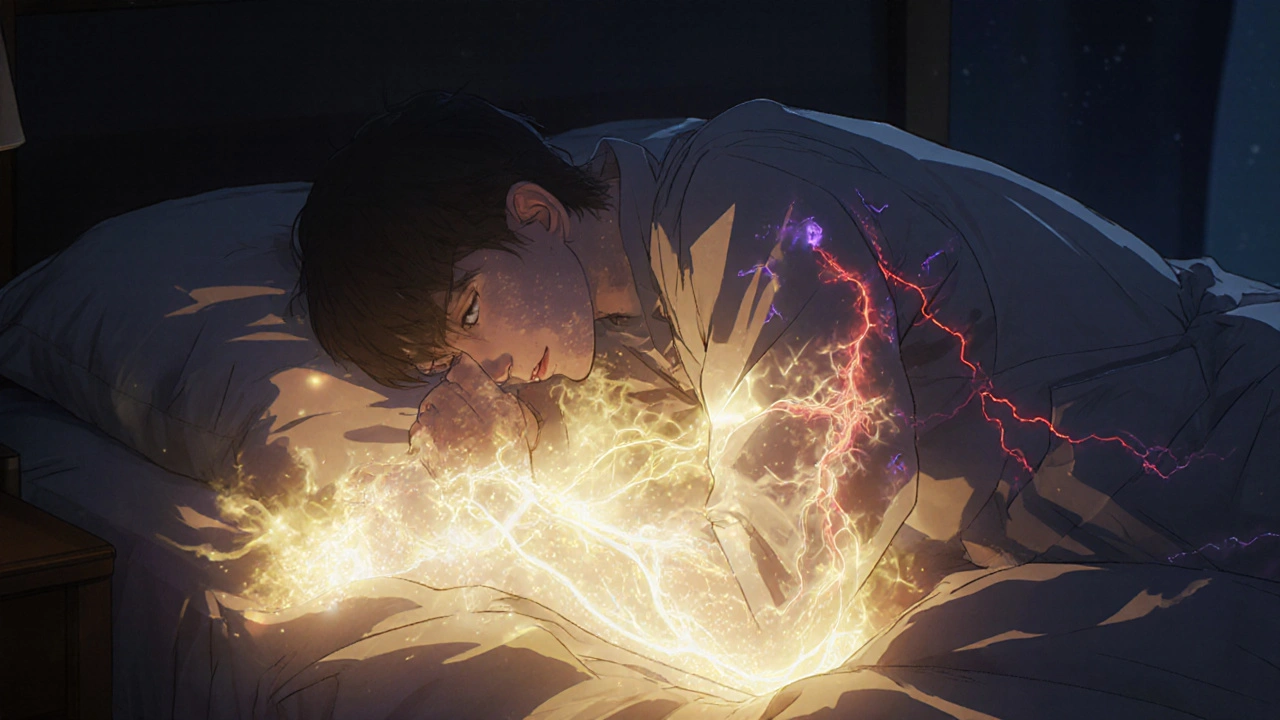
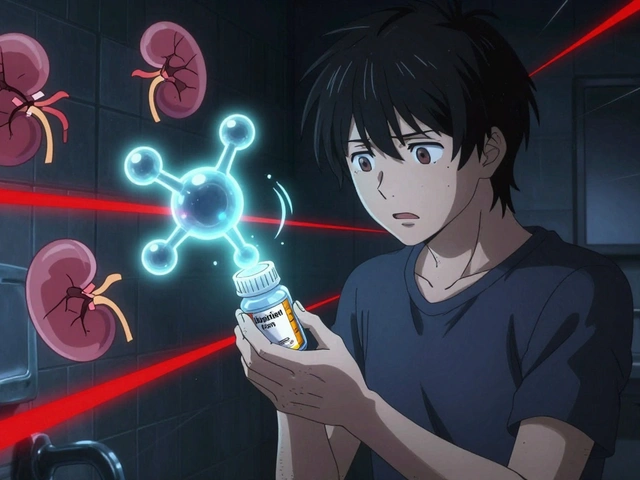
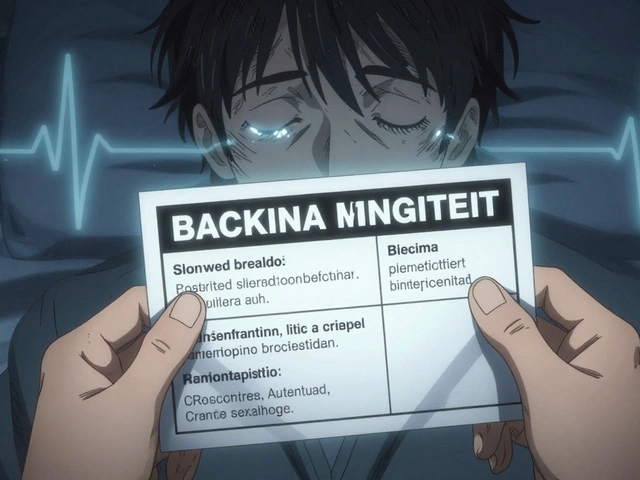
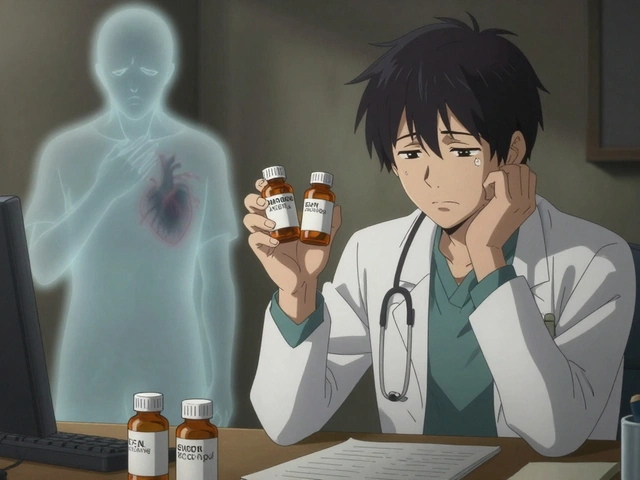
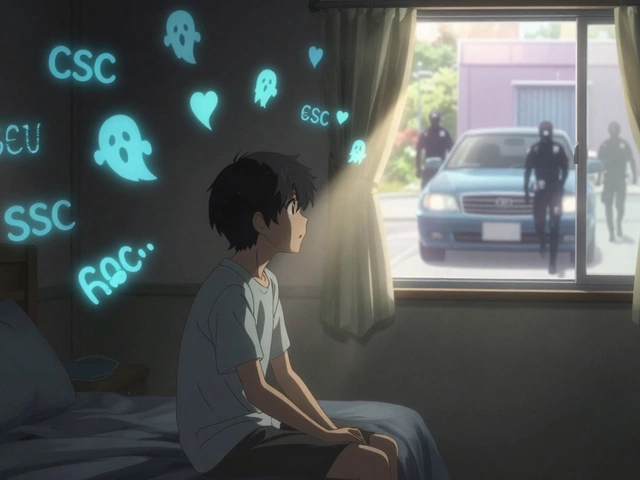
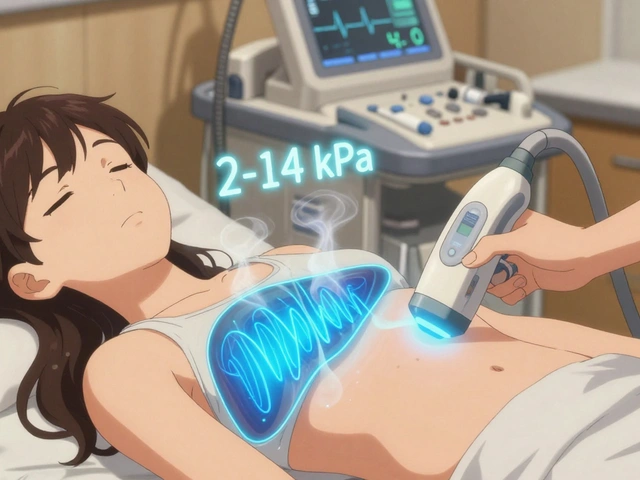
12 Comments
Georgia Green
November 17, 2025Just started cholestyramine last week. Tasted like powdered sidewalk. Mixed it with peanut butter and now I’m just mad at my life. But the itching? Down from 9/10 to 5/10. Worth it? Maybe. Sleep is still trash.
Also, why does everyone say 'just take it with applesauce'? Nobody tells you it turns into concrete in your mouth.
Christina Abellar
November 18, 2025Thanks for this. I’ve been told antihistamines were my only option for years. Finally saw a hepatologist who knew what he was doing. Rifampin made my urine look like a highlighter, but I haven’t scratched my arms raw in weeks.
Eva Vega
November 20, 2025Given the pathophysiology of cholestatic pruritus, the inhibition of ileal bile acid transporters (IBAT) represents a mechanistically rational therapeutic strategy. Maralixibat’s pharmacodynamic profile demonstrates superior receptor specificity compared to non-absorbable anion exchange resins like cholestyramine, which exhibit poor bioavailability and off-target binding kinetics.
Additionally, the upregulation of hepatic CYP450 enzymes via rifampin may induce drug-drug interactions that compromise the therapeutic index of concomitant medications.
Matt Wells
November 21, 2025It is astonishing that so many clinicians still rely on antiquated, evidence-deficient interventions such as antihistamines when the molecular mechanisms underlying cholestatic pruritus have been thoroughly elucidated since at least 2015. The persistence of such practices speaks to a systemic failure in continuing medical education, particularly in primary care settings where hepatology literacy remains abysmal.
Margo Utomo
November 23, 2025OMG YES. 😭 I was on cholestyramine for 6 months. It was like swallowing sandpaper dipped in regret. Then I tried maralixibat. My husband said I stopped screaming at 3 a.m. for the first time in 2 years.
Also, I’m now a full-on advocate. I’ve sent this post to 3 of my friends who are suffering. You’re a lifesaver. 🙌💊
George Gaitara
November 24, 2025So let me get this straight - you’re telling me the entire medical establishment has been lying to us for decades? And now some fancy $12,000 pill is the answer? I smell Big Pharma. Where’s the study that proves this isn’t just a placebo effect masked by expensive packaging?
Also, why is no one talking about the fact that liver transplants cure this? Maybe we should just skip all the drugs and go straight to the knife.
Deepali Singh
November 24, 2025Interesting. But have you considered that the autotaxin-LPA pathway might be a downstream effect rather than the root cause? The real driver could be gut microbiome dysbiosis secondary to bile acid accumulation. The studies you cite don’t control for dietary fiber intake or probiotic use. I’ve seen 3 cases where gut restoration alone reduced pruritus by 40%.
Sylvia Clarke
November 26, 2025Wow. This is the most coherent, compassionate, and scientifically rigorous piece on cholestatic pruritus I’ve ever read. I’m not even a medical person - I just have PBC - and I feel seen. You didn’t just list drugs, you explained why we suffer, why we’ve been failed, and now… there’s hope.
Also, I laughed when you said rifampin turns urine orange. My cat now stares at the toilet like it’s a radioactive artifact. 🐱🟠
Jennifer Howard
November 27, 2025As a former nurse with over 25 years of clinical experience, I must say this entire article is dangerously misleading. You are promoting experimental pharmaceuticals while dismissing the foundational role of detoxification through liver support supplements - milk thistle, NAC, and phosphatidylcholine. These are proven, natural, and cost-effective. Why are you ignoring the wisdom of traditional medicine? This is why patients are dying - because doctors are seduced by corporate-funded trials.
Abdul Mubeen
November 28, 2025Let me ask you something - how many of these "new treatments" were developed by pharmaceutical companies with ties to the FDA? And why is maralixibat only approved for children with Alagille syndrome? Is this a deliberate delay to maximize profits? I suspect the real reason it’s not widely available is because it’s too effective - it would collapse the market for cholestyramine and rifampin, which are still profitable for big pharma.
Kathy Grant
November 29, 2025I spent 18 months crying in the shower because I couldn’t sleep. I thought I was going crazy. Then I tried naltrexone. The first week? Pure hell. Anxiety like I’d never felt. But on day 10? I slept 7 hours straight. I cried again - but this time because I remembered what peace felt like.
To anyone reading this who’s still suffering: it gets better. Not because of magic. But because science finally caught up with our pain. You’re not broken. Your body’s just signaling in a language no one learned to listen to - until now.
Dave Feland
November 30, 2025The entire premise of this article is flawed. Cholestasis is not a disease - it’s a symptom. And the real cause? Glyphosate. It’s in your food, your water, your medications. It disrupts bile acid conjugation. No drug will fix this because the system is poisoned. The FDA knows. The AMA knows. They just don’t want you to know. This is why your liver fails - not because of genetics, but because of corporate greed.